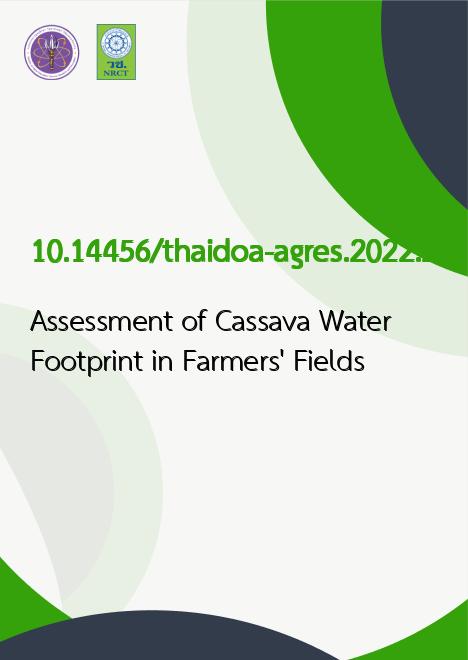
|
Assessment of Cassava Water Footprint in Farmers' Fields |
|---|---|
| รหัสดีโอไอ | |
| Creator | Walaiporn Sasiprapa |
| Title | Assessment of Cassava Water Footprint in Farmers' Fields |
| Contributor | Kusuma Rodpawpan, Sopita Somkid, Raweewan Chuekittisak, Darunee Pangluak, Prathompong Wongsuwan, Benjamas Kumsueb, Anon Malipan |
| Publisher | Department of Agriculture |
| Publication Year | 2565 |
| Journal Title | Thai Agricultural Research Journal |
| Journal Vol. | 40 |
| Journal No. | 3 |
| Page no. | 265-275 |
| Keyword | water footprint, cassava, yield |
| URL Website | https://at.doa.go.th/journal |
| Website title | Thai Agricultural Research Journal |
| ISSN | 0125-8389 |
| Abstract | Water footprint is used as a tool to measure both direct and indirect water uses by crops or products. Cassava fresh root yield has a wide range of uses in many local downstream industries. Water footprint (WF) of cassava had mostly been reported from secondary data- due to limited availability of field-based publication. WF of cassava fresh root yield in farmer's fields was investigated from 4 consecutive growing seasons from 2017/18 to 2020/21 in 26 provinces. Results showed that WF varies for each region due to differences in soils, weather and management. Most cassava were grown under rainfed conditions and KU50, R5 R72 and R11 were the major cultivars. The growing season started from March to May, earlier in eastern region and later in the northern region, thus varied from 10.4 to 19 months long. The average fertilizer application rate was 7.2 kg.N/rai The average yield was 4.1 ton/rai. Average yield from Udon Thani province was the highest at 6.5 ton/rai and Pitsanulok was the lowest at 2.9 ton/rai. The WF assessment showed that water uses per 1 ton of fresh root product was 268 m3 whereas 226 m3 is WFgreen and 42 m3 is WPgrey. Uthai Thani province was the highest at 402 m3 and Udon Thani was the lowest at 138 m3. The water footprint was found to be positively correlated with the amount of fertilizer used but was the opposite for cassava fresh root yield. The month of the year at harvest, number of months after planting and planting year tend to increase water footprint, whereas cultivar was not found to be related to water footprint. |